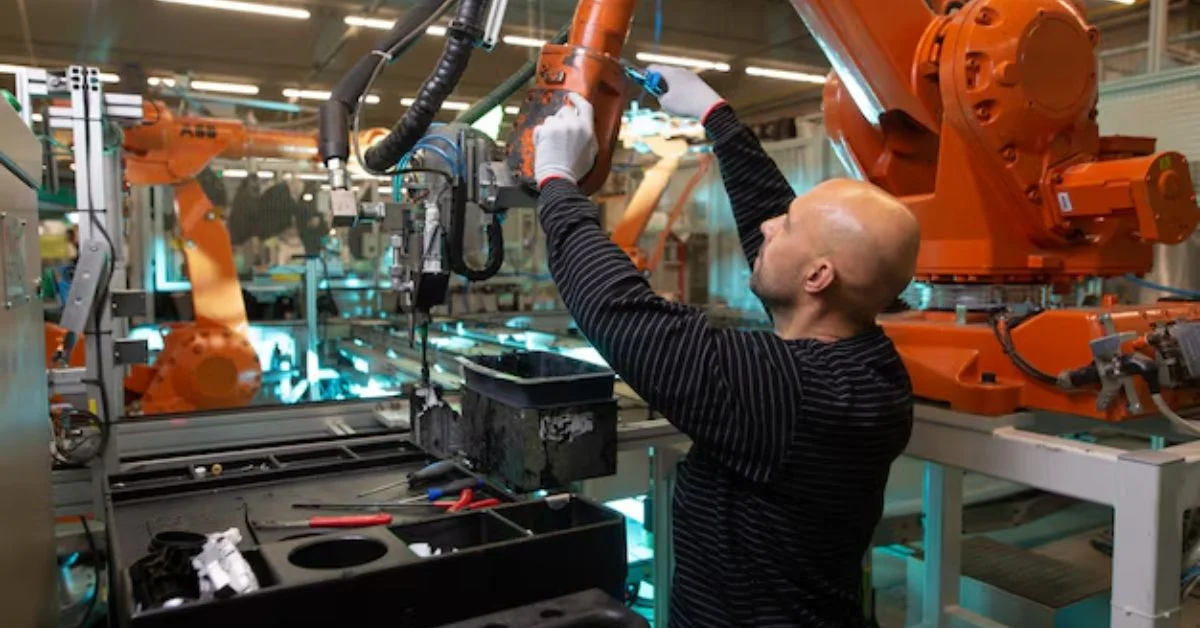Automation is the most straightforward way to make manufacturing cheaper. Thanks to it, your company reduces waste and errors as well as produces more with fewer resources.
Your task here is to plan this automation right. The safest strategy is to turn to a trusted smart manufacturing agency. They should, first and foremost, inspect your industrial infrastructure and suggest the solutions that will work best for it. Below are a few examples of what they may offer.
SCADA Systems
Supervisory Control and Data Acquisition systems let you monitor and control everything in your infrastructure:
- machinery
- equipment
- production lines.
They collect and process data from various sensors so that operators see the production process in detail. SCADA systems then use this data to automate key processes, trigger alarms, and adjust operations.
Let’s say there’s a beverage manufacturing plant that uses a SCADA system. With the help of the latter, it monitors
- filling machines
- conveyors
- labeling units.
The SCADA system collects data on speed, temperature, and flow rates. When a machine’s temperature goes beyond a set threshold, the SCADA system immediately alerts operators. Needless to say, this significantly reduces downtime.
GUIs and HMIs
Here, we’ve got Graphical User Interfaces (GUIs) and Human-Machine Interfaces (HMIs). Both bridge the gap between humans and machines in manufacturing.
The former is a digital interface with icons, buttons, and menus. It allows users to interact with software or systems. The latter is an interface designed to enable interaction with industrial machines. GUIs can be applied in various software environments, and HMIs are specifically tailored for industrial settings.
A manufacturing supervisor, for instance, would use a GUI within a cloud-based dashboard to monitor production metrics across different departments. This way, they’ll switch between
- real-time production stats
- machine performance analytics
- resource allocation.
As to HMIs, they could be of help to a metal fabrication company. Here, this interface can be connected directly to a CNC machine. Through the HMI, operators
- set specific dimensions for a custom metal part
- monitor the machine’s performance
- receive instant alerts on operational status.
The HMI thus offers a direct way to control and monitor the machine.
Manufacturing Execution Systems (MES)
These help manufacturers manage (and optimize) everything from raw materials to finished products. That is, MES
- track production on the shop floor
- automate routine tasks
- ensure that the correct workflows are followed.
They also help manufacturers keep track of key performance metrics. Consider an automotive parts manufacturer, for instance. It can implement MES to manage its inventory and track quality control. When parts are assembled, the MES automatically log each step and record data on component quality and process times. If a defect is detected, the system flags the part for quality inspection before it leaves the factory.
EMI Systems
And finally, Enterprise Manufacturing Intelligence (EMI) systems gather and analyze data from various manufacturing systems. They then present it in a friendly way (one that supports strategic decision-making). EMI systems pull data from SCADA, MES, and ERP systems.
As an example, let’s take an electronics manufacturing company that uses an EMI system to track production efficiency across multiple lines. The system collects data on
- output rates
- defect rates
- downtime.
After that, it presents the data in a dashboard.
Conclusion
All in all, there are quite a few opportunities for smart manufacturing today. The biggest challenge is to choose the one that’ll work best for your company. It’s wise to consult an agency that specializes in industrial automation since they have rich experience in building and implementing such systems so they can recommend the most cost-effective one.
For more information,click here.









